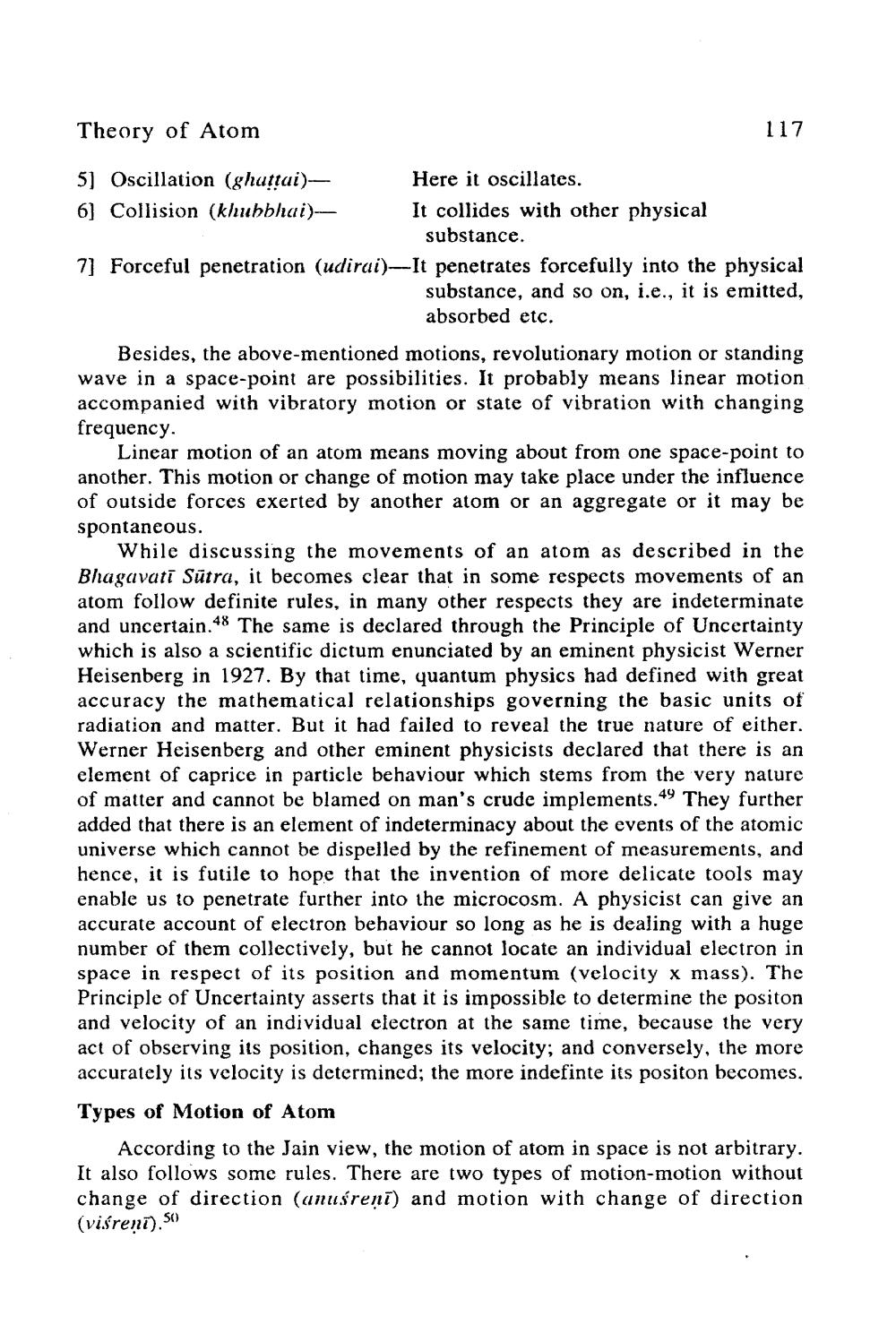________________
Theory of Atom
117
5) Oscillation (ghattai)
Here it oscillates. 6) Collision (khubbhai)--
It collides with other physical
substance. 7] Forceful penetration (udirai)-It penetrates forcefully into the physical
substance, and so on, i.e., it is emitted, absorbed etc.
Besides, the above-mentioned motions, revolutionary motion or standing wave in a space-point are possibilities. It probably means linear motion accompanied with vibratory motion or state of vibration with changing frequency.
Linear motion of an atom means moving about from one space-point to another. This motion or change of motion may take place under the influence of outside forces exerted by another atom or an aggregate or it may be spontaneous.
While discussing the movements of an atom as described in the Bhagavati Sūtra, it becomes clear that in some respects movements of an atom follow definite rules, in many other respects they are indeterminate and uncertain.48 The same is declared through the Principle of Uncertainty which is also a scientific dictum enunciated by an eminent physicist Werner Heisenberg in 1927. By that time, quantum physics had defined with great accuracy the mathematical relationships governing the basic units of radiation and matter. But it had failed to reveal the true nature of either. Werner Heisenberg and other eminent physicists declared that there is an element of caprice in particle behaviour which stems from the very nature of matter and cannot be blamed on man's crude implements.49 They further added that there is an element of indeterminacy about the events of the atomic universe which cannot be dispelled by the refinement of measurements, and hence, it is futile to hope that the invention of more delicate tools may enable us to penetrate further into the microcosm. A physicist can give an accurate account of electron behaviour so long as he is dealing with a huge number of them collectively, but he cannot locate an individual electron in space in respect of its position and momentum (velocity x mass). The Principle of Uncertainty asserts that it is impossible to determine the positon and velocity of an individual electron at the same time, because the very act of observing its position, changes its velocity; and conversely, the more accurately its velocity is determined; the more indefinte its positon becomes,
Types of Motion of Atom
According to the Jain view, the motion of atom in space is not arbitrary. It also follows some rules. There are two types of motion-motion without change of direction (anusrenī) and motion with change of direction (viśreni).50




